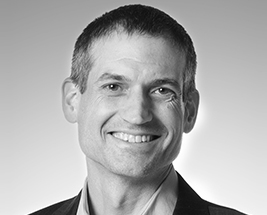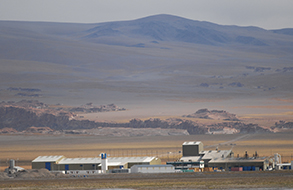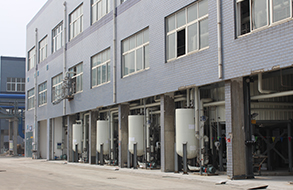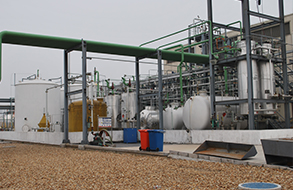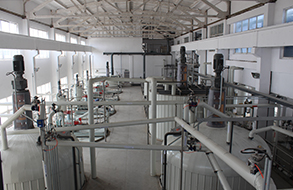Focus on lithium market and look forward to the future development
----Interview with Livent Cooperation
Chief Operating Officer
Thomas Schneberger
- Livent, formerly FMC Lithium, is a pure-play, fully integrated lithium company with a long, proven history of producing performance lithium compounds. Our primary products, namely battery-grade lithium hydroxide, butyllithium and high purity lithium metal, are critical inputs used in various performance applications.
- Asian Metal: Thanks for accepting the interview of Asian Metal! Although FMC is well known, would you like to give a brief introduction of Livent?
- Thomas: Livent, formerly FMC Lithium, is a pure-play, fully integrated lithium company with a long, proven history of producing performance lithium compounds. Our primary products, namely battery-grade lithium hydroxide, butyllithium and high purity lithium metal, are critical inputs used in various performance applications. Our strategy is to focus on supplying battery-grade lithium hydroxide to the fast-growing electric vehicle (EV) battery market while continuing to maintain our position as a leading global producer of butyllithium and high purity lithium metal.
- Asian Metal: Would you like to introduce Livent's main business and projects?
- Thomas: Livent produces lithium compounds for use in applications that have specific performance requirements, including battery-grade lithium hydroxide for use in lithium-ion batteries. We also supply butyllithium, which is used to synthesize polymers, synthetic rubbers for tires and pharmaceutical products. Additionally, we produce a range of specialty lithium compounds including high purity lithium metal, which is used in the production of lightweight materials for aerospace applications and non-rechargeable batteries.
- Over the next several years, we will focused on investing in our assets, our technology capabilities and our people to ensure we can continue to meet our customers' demands.
- Asian Metal: As one of the top supplier of lithium products, what is the major advantage of FMC/Livent products?
- Thomas: Livent's partnership with customers and deep material science expertise set it apart in the market. Performance lithium compounds are typically produced using base lithium compounds like lithium carbonate and lithium chloride. Producing these compounds requires extensive manufacturing process technology and application expertise, as they need to meet specific performance requirements set by customers.
- Asian Metal: I would like to offer my sincerest congratulations to you around your newly added Chinese lithium hydroxide capacity. Would you please introduce your lithium project?
- Thomas: Thank you. Yes, in June 2017, we started commercial sales from a new lithium hydroxide facility in China and nearly doubled our lithium hydroxide capacity to 18.5 kMT per year. The new capacity meets the performance requirements that our customers demand and the plant has run above our expectations. We also plan to increase our annual total production capacity of lithium hydroxide to 30 kMT by the end of 2019 and to approximately 55 kMT by the end of 2025 which will include further increases of volumes at the facility in China.
- Asian Metal: From what I understand, the newly adding production capacity will be sold to Japan, South Korea, is it? Would you like to introduce your sales plan?
- Thomas: Livent is expanding its capacity of lithium hydroxide, as this is one of the fastest growing product lines in the lithium industry. With EV demand for lithium hydroxide projected to grow 35% annually over the next 7 years according to published reports, Livent plans to maintain its competitive position and partnerships with strategic cathode and battery makers. We are not targeting specific countries; rather, we are focusing on strategic customers and end users. As the EV market expands, we anticipate sales of our lithium hydroxide will encompass Japan, Korea, China, U.S and Europe.
- Asian Metal: NCA in Japan market, NCM 811 in China and South Korea market demand are booming considering the NEV range. Lithium hydroxide demand would be better than lithium carbonate. Would you like to share your opinion about lithium hydroxide demand in the coming years?
- Thomas: We believe there will be a significant increase in demand for battery-grade lithium compounds over the next ten years, driven by growth in the EV market. By some estimates, annual EV sales are expected to account for 55% of all vehicles sold annually by 2040.
- As the world moves away from internal combustion engines to electric vehicles, we anticipate EV battery manufacturers will increasingly use high nickel content cathode materials. These specific materials substantially improve the energy density of batteries, enabling longer driving ranges that governments and consumers are demanding.
- This is a great opportunity for us, as battery-grade lithium hydroxide is a critical component in the production of high nickel content cathode materials.
- Livent has over 60 years of experience in lithium hydroxide production and is one of the leading producers of battery-grade lithium hydroxide for EV applications. We are also one of a very limited number of companies that has consistently demonstrated the ability to produce lithium hydroxide that meets strict customer requirements across our multiple manufacturing locations. In fact, we are one of only two companies that produce lithium hydroxide in multiple countries, which helps us ensure consistent supply for our customers.
- Asian Metal: NEV (neighborhood electric vehicle) market is the major and promising downstream industries of lithium products. What do you think of the future trend of NEV market?
- Thomas: We see tremendous promise in the NEV market, particularly in the next 10 years, for several reasons. First, more and more countries are taking steps to remove internal combustion engines off the road - partially or fully - within the next 20 years, including: Norway, Germany, India, France, the United Kingdom and, of course, China. In addition to these regulations, many countries plan to roll out a range of regional subsidies and incentives for both consumers and automakers. Another factor driving growth in this market is changing consumer preferences. Consumers are becoming more eager to take part in cutting down global greenhouse gas emissions, and EVs have made strides to make it easier for them to do so. Finally, new technology, such as advanced battery materials, will also enable growth, making EVs that are more efficient, easier to drive, or in some cases, fully autonomous.
